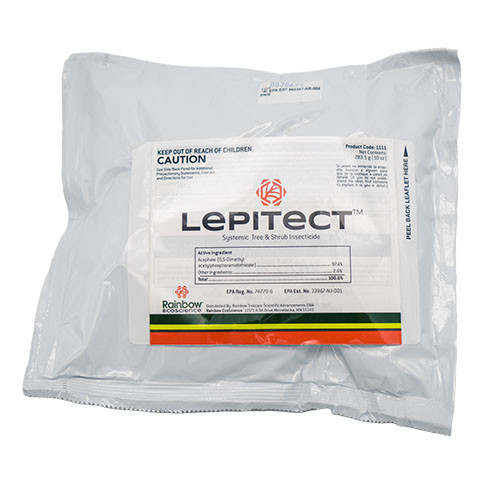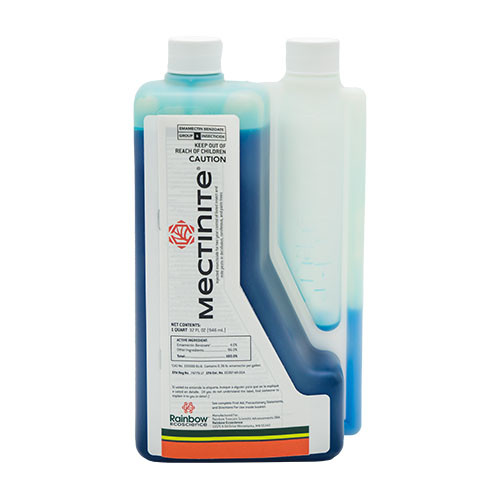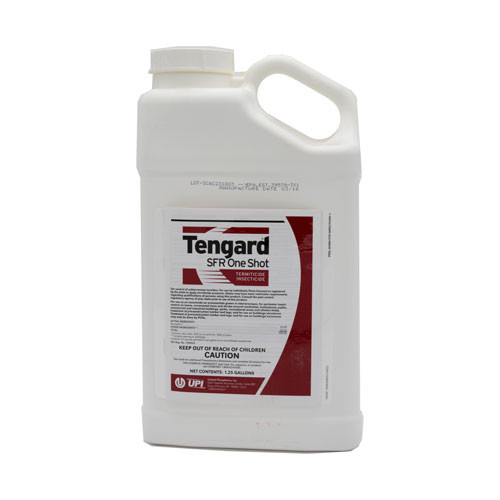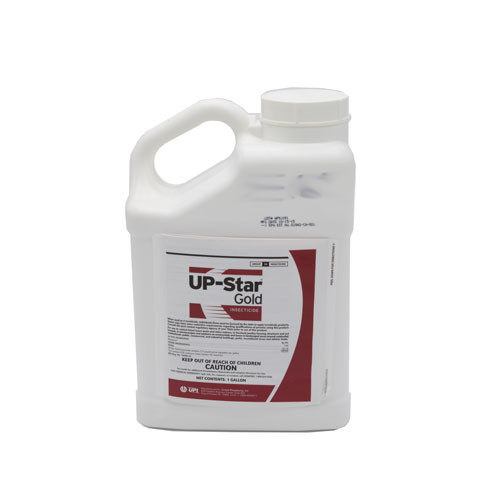Orange-striped oakworm, Anisota senatoria, is found primarily on oak trees and other hardwoods in late July through September. This insect is active primarily in the Eastern US, and is more of a nuisance than a pest. Larvae can defoliate an entire tree and rain down excrement, known as frass. This happens late in the season and does little harm to the tree, but can be a nuisance when the excrement covers patios, driveways, and sidewalks.
Treatment Strategy
Healthy trees can tolerate a single defoliation event; however, multiple defoliation events can cause dieback and decline even on healthy trees especially in stressful urban sites where feeding is coupled with stress from abiotic factors. Commercial insecticide treatments on individual high value shade trees are the only way to ensure predictable protection during high pest pressure.
Nuisance from frass droppings may also warrant treatment. Mectinite can be applied to control larvae for a full season. Lepitect may also be used if active feeding is noticed and immediate action is required. For large trees and heavy oakworm populations re-apply Lepitect every 30-45 days throughout the leaf feeding period of oakworm.
Consider Mectinite or Lepitect Infusible as tree injection treatments for trees that cannot be treated with foliar sprays or other systemic options.
Other Treatment Practices
- Promote health and vigor with proper irrigation, mulching, proper pruning, root collar excavation and prescription based fertilization practices.
- Adequate water is a key factor in maintaining stress free plants. A slow, deep watering event once every few weeks during dry conditions will help maintain soil moisture levels and minimize stress.
- Mulch is very beneficial for all trees because it reduces competition with turf and moderates soil temperature and moisture levels. The addition of 3 inches of wood chips or shredded bark under the drip line can have a very beneficial effect by holding in moisture and promoting healthy fibrous roots.
- Cambistat can be also be used to promote tree health and reduce the incidence and severity of stress mediated diseases and insect problems on trees growing in urban areas.
Expected Results
Mectinite, trunk injection, and Diamid T&O, foliar spray, have shown to be very effective.
Signs of Damage
- Defoliated leaves
- The midrib of the leaf is left behind
- Twig dieback in small trees
- Defoliation of entire tree
- Caterpillars that are 1 ½ to 2 inches long, black, and have several narrow yellow-orange lines running the length of the body
- Behind the heads are 2 stiff blunt spines that appear like horns
- Frass can be seen, and in some cases heard as it drops in mass quantities
Photo: Erich G. Vallery
USDA Forest Service – SRS-4552, Bugwood.org
Photo: USDA Forest Service – Northeastern Area Archive
USDA Forest Service, Bugwood.org
Trees At Risk
Mostly oak (Quercus spp.), but also maple (Acer spp.), hickory (Carya spp.), and birch (Betula spp.)
Biology
- Overwintering occurs in the ground as a pupa.
- Adult moths emerge between June and August and lay eggs in clusters on the underside of leaves.
- Larvae are active and feeding from July to August (1900GDD).
- Larvae drop to the ground in August or September and burrow into the soil to pupate.
References
Forest Pests
https://www.forestpests.org/vd/95.html
University of Florida
http://entnemdept.ufl.edu/creatures/trees/moths/yellowstriped_oakworm.htm
Always refer to product label for rates and approved uses. Some images courtesy of forestryimages.org or Wikimedia Commons. Use of the images does not imply endorsement of treatments.







